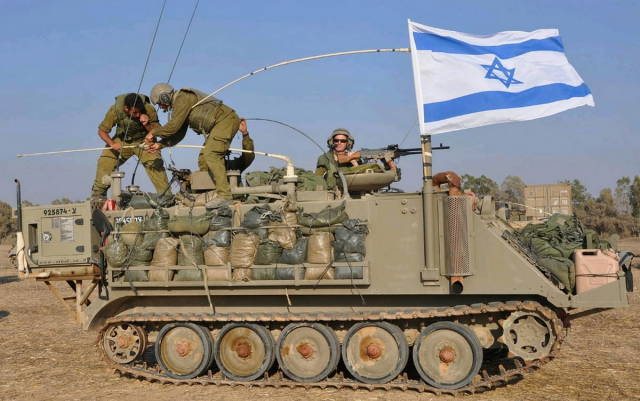Within the framework of the Future Combat Vehicle project, the Israeli Defense Ministry is studying ways to improve the efficiency and security of promising military equipment. The task is to "achieve a greater effect with less cost", that is, the possibility of solving combat tasks with lighter and smaller combat vehicles with reduced crews is being considered.
The research focusing around the development of a promising armored personnel carrier is united by the Carmel program. According to the plan, a promising armored personnel carrier should have compactness, maneuverability and combat effectiveness. Characterized by high survivability, maintainability and affordable price. The number of the crew should not exceed two people.
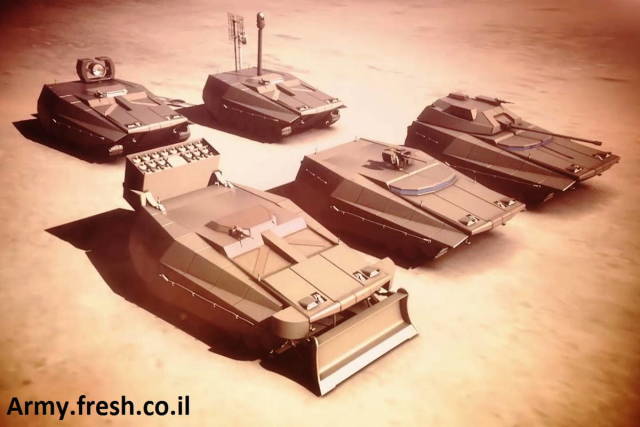
The Carmel Project
The peculiarity of "Carmel" is that the program itself does not develop a new armored personnel carrier, but rather develops an innovative vision of future combat operations. The works are based on autonomous and automatic maneuvering, artificial intelligence (AI) and other promising technologies.
The program is supervised by the Directorate of Research and Development of the Ministry of Defense of Israel (Research and Development Directorate, DRDD). After the completion of the first phase of research under the Carmel program in August 2019, the directorate conducted tests of technological demonstrators. The purpose of the event was an operational assessment of innovations for military equipment of the future, the introduction of which is planned from the beginning of 2021. Some of the new technologies were demonstrated during a special screening for invited persons from the IDF, the Ministry of Defense and foreign delegations.
Military equipment of the future: technological demonstrators
Three industry groups from Israel's largest defense companies represented their demonstrators: Elbit Systems, IAI and Rafael. The M-113 APC became a surrogate platform of the combat vehicle for them. In the future, the combat platform will receive a new chassis (with a diesel generator and a battery of increased capacity), but its test is attributed to a later period, and the appearance of the final product is expected only in 5-7 years.
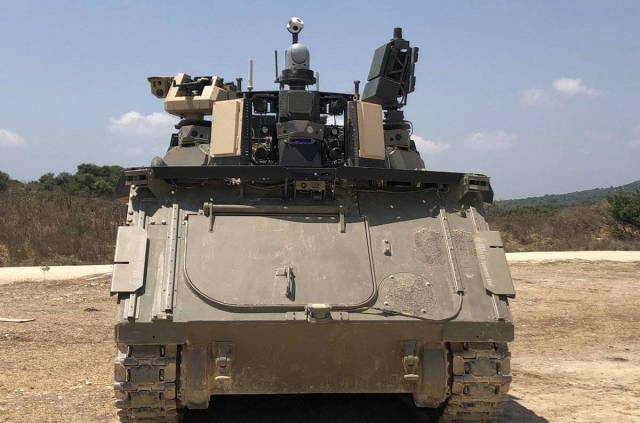
BTR M-113 as a surrogate platform
At the first stage of the Carmel, its participants had to prove the feasibility of developing military equipment of the future (specifically armored personnel carriers), which can be controlled by two crew members in a compartment with closed hatches. A variety of sensors could be provided at their disposal: radar, thermal imagers, video cameras, acoustic sensors and lasers, as well as unmanned aerial vehicles (UAVs). All information coming from sensors and UAVs should be combined and transmitted to the crew for situational assessment and decision-making (reaction).
The participating companies were asked to develop their own technological control concept for a light (30-35 tons) combat vehicle armed with an automatic cannon and medium-caliber missiles. The regular crew of the APC should consist of two people. The third member could be an operating system specialist. It was expected that the introduction of AI elements, automation and system autonomy, would allow the transition to an advanced habitable compartment, similar to the cockpit of a modern fighter. As a result, the load on the crew will decrease, and its actions will become more timely and effective.
Testing of each of the proposed solutions was carried out within one week. The combat equipment was controlled by DRDD testers, and the number of possible threats they had to face sometimes reached 35 in one mission. Each group of developers used their own approach to achieve their goals.
Demonstrator from Elbit Systems
Elbit Systems' approach included the introduction of autonomy and AI. According to observers, the armored personnel carrier equipped with Elbit Systems has successfully demonstrated its operational capabilities as a powerful independent combat unit, a network station for multispectral monitoring and information integration, as well as a basic platform for controlling additional unmanned (uninhabited) systems.
With high autonomy, the Elbit Systems technology demonstrator could perform a variety of key tasks: off-road driving, quick target search and prioritization, as well as operational and high-precision firing day and night. By connecting to the network, the machine not only transmitted the tasks set by the central headquarters and other combat platforms, but also acted as a relay of intelligence and other data. The APC controlled UAVs that performed virtual take-off and landing, transmitted the results of reconnaissance to the crew or were used as shock elements.
The demonstrator controls the UAV
Elbit Systems has presented a technological concept of future military equipment with two forms of user interfaces: large screens for general planning and an IRON VISION augmented reality helmet. The technology of the latter is based on the system used by the pilots of the F35 fighter, and implements the function of "transparent armor. It allows the crew, while under the protection of armor, to conduct continuous observation and perceive ("see") the surrounding environment in an intuitive and detailed way.
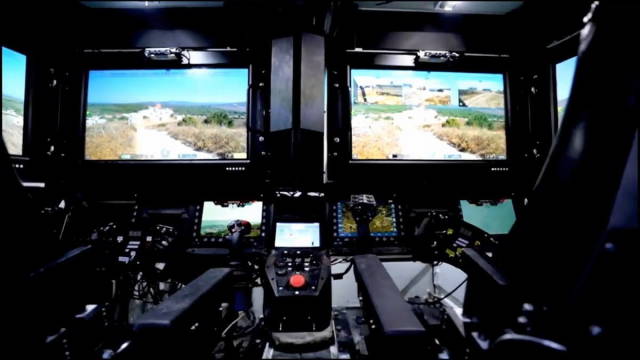 |
| The interface consists of flat monitors. |
Various user interfaces are optimized for different stages of the crew's combat activity: the planning stage and the contact phase. At the planning stage, the military equipment of the future does not collide with the enemy, so it is more convenient for the crew to use the familiar user interface of large flat monitors.
When in contact with the enemy, IRON VISION helmets with mounted displays (Helmet Mounted Display, HMD) are activated. In this case, the crew gets a panoramic and intuitively clearer picture of the situation. Tests showed that using the helmet display, two crew members confidently controlled the APC with the hatches completely closed, having a 360° circular view of the surrounding area in high resolution.
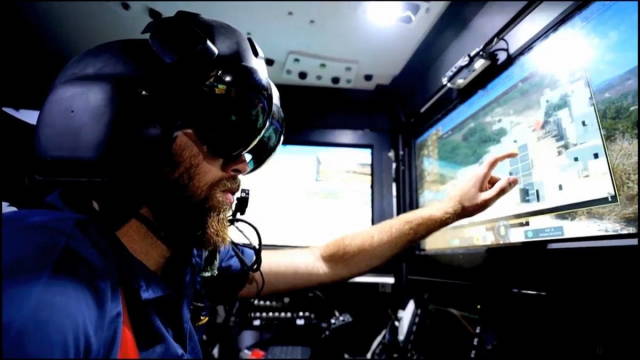
A tester wearing an IRON VISION helmet
In addition, IRON VISION guaranteed the crew members the full use of the C4I's capabilities. In particular, augmented reality allows real-time projection of tactical data and information directly into the operator's field of view. Thus, simultaneous viewing of the battlefield picture and tactical information is realized, which significantly increases the reaction speed (more details ).
Based on the materials of the European Security & Defense magazine
